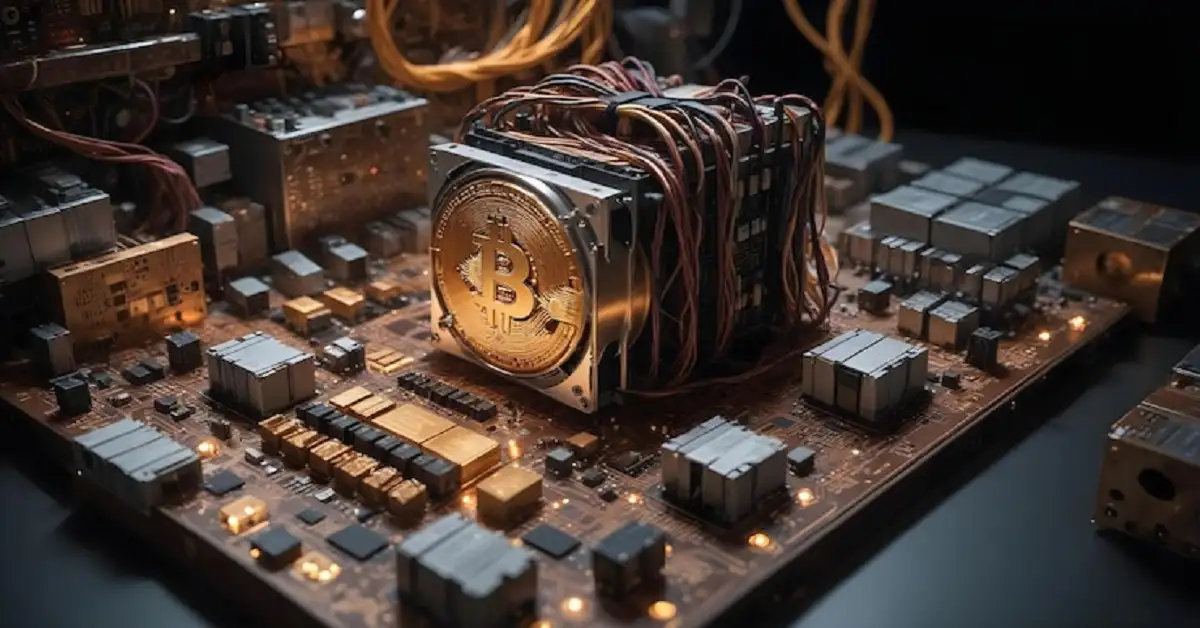As blockchain adoption continues to expand in sectors ranging from finance to logistics, one of its foundational technologies—the crypto mining machine—remains essential for maintaining network integrity, transparency, and decentralization. These machines, commonly known as ASIC (Application-Specific Integrated Circuit) miners, are designed to execute complex mathematical operations that validate and secure blockchain transactions.
This article explores the technical role of mining machines, their architectural evolution, energy dynamics, and their influence on the decentralization of proof-of-work blockchains.
What Does a Crypto Mining Machine Actually Do?
At its core, a mining machine performs cryptographic hash functions—specifically the SHA-256 algorithm for Bitcoin. These hashes are used to secure each block of transactions, ensuring that data once written to the blockchain cannot be altered without redoing the work on every subsequent block.
Miners compete to solve these mathematical puzzles first; the winner adds the block to the chain and receives a block reward in cryptocurrency. This process is known as “Proof of Work” (PoW), and it prevents tampering, double-spending, or central manipulation.
Evolution of Mining Hardware: From CPU to ASIC
In the early days of Bitcoin (2009–2011), mining was conducted using ordinary CPUs and later GPUs. However, these general-purpose devices lacked the computational efficiency necessary to remain competitive as difficulty levels rose.
ASICs emerged in 2013 as a response to increasing network complexity. Unlike CPUs and GPUs, which perform a wide range of computing tasks, ASICs are custom-built for a single function: mining one specific algorithm. This specialization enables enormous gains in hashrate (measured in terahashes per second, TH/s) while lowering energy usage per calculation.
| Mining Era | Hardware Type | Avg Hashrate | Power Efficiency (J/TH) |
| 2009–2010 | CPU | <0.01 TH/s | ~100,000 J/TH |
| 2011–2013 | GPU | ~0.5 TH/s | ~5,000 J/TH |
| 2013–2016 | FPGA | ~1–5 TH/s | ~1,000 J/TH |
| 2016–2025 | ASIC | Up to 1100 TH/s | ~15–22 J/TH |
Modern ASICs are at least 10,000 times more efficient than early CPU miners, underscoring the technical leap involved.
Hardware Design Priorities in 2025
Contemporary crypto mining machines emphasize several critical features:
- Hashrate: The speed at which a machine can compute hashes. Higher rates improve a miner’s chance of winning block rewards.
- Energy Efficiency: The energy consumed per terahash is a major determinant of profitability.
- Thermal Management: High-performance chips generate significant heat, requiring airflow design, hydro-cooling, or immersion systems.
- Durability: Machines must sustain continuous operation under heat and dust exposure for months or years.
- Software Compatibility: Modern miners often integrate with firmware like Braiins OS or Hive OS for optimization.
Mining, Energy, and Environmental Impact
One of the most controversial aspects of mining machines is their energy footprint. According to the Cambridge Centre for Alternative Finance (2024), Bitcoin mining consumes between 0.1–0.4% of global electricity. However, energy usage varies dramatically by machine efficiency, power source, and geographic location.
Sustainability Trends in 2025:
- Increasing use of stranded or renewable energy sources (hydroelectric, solar)
- Deployment of machines near off-grid energy production
- Advances in power efficiency—new ASICs approaching 12 J/TH
These trends reflect a broader shift toward aligning mining economics with global sustainability goals.
Decentralization and Accessibility
The rise of compact crypto mining machines has re-enabled home and small-scale miners to participate in the network. By reducing noise, power draw, and operational complexity, newer models like the Antminer S9 SE and WhatsMiner M30S++ are suitable for non-industrial settings.
This supports the decentralization ethos of Bitcoin and similar networks—by distributing control and reducing reliance on large mining farms concentrated in specific regions.
The Market for Crypto Mining Machines in 2025
The ASIC market is largely dominated by a few manufacturers such as Bitmain, MicroBT, and Canaan. However, sourcing and distribution networks vary significantly. Buyers must consider factors such as:
- Import taxes and delivery timelines
- Firmware pre-installation and support
- Voltage compatibility
- Warranty and repair logistics
Reliable platforms like mineshop.eu offer EU-based inventory and support, which can reduce setup time and improve post-sale service.
7. Forecast: What’s Next for Mining Hardware?
ASIC innovation is projected to continue along two axes:
- Chip Shrinking: Migration from 5nm to 3nm process nodes by 2026, enabling higher hashrate and energy efficiency.
- Hybrid Cooling Systems: Combining hydro- and air-cooling to enhance thermal stability while reducing energy use.
Meanwhile, diversification into altcoin mining (e.g., Kaspa, Kadena) could give rise to algorithm-specific ASICs beyond Bitcoin’s SHA-256.
Conclusion
The crypto mining machine is far more than a tool—it’s an economic agent and a cryptographic guardian of public blockchains. As mining difficulty, energy prices, and public scrutiny evolve, so too does the design and deployment of these machines.
Understanding their function, market dynamics, and technological progress is critical not only for miners but for anyone invested in the infrastructure of decentralized networks. Whether building a home rig or sourcing for an industrial facility, today’s ASICs represent the cutting edge of applied cryptography in the physical world.
